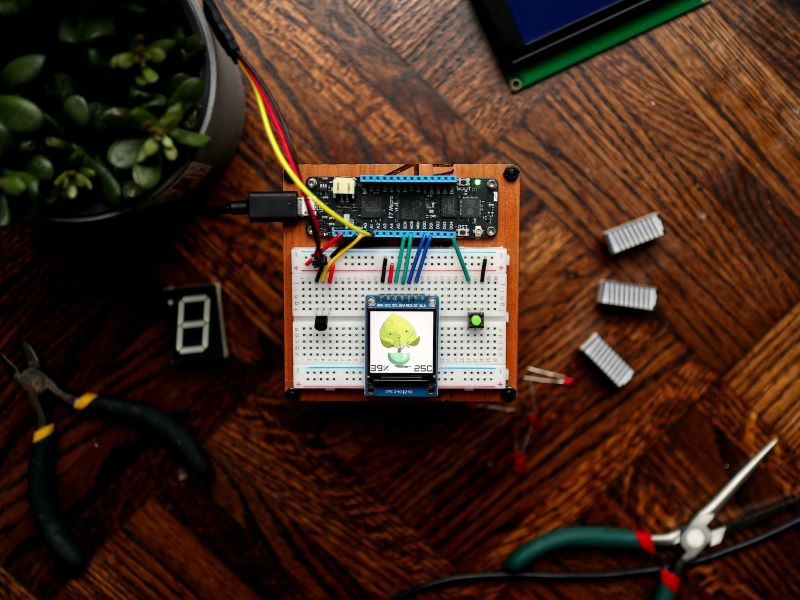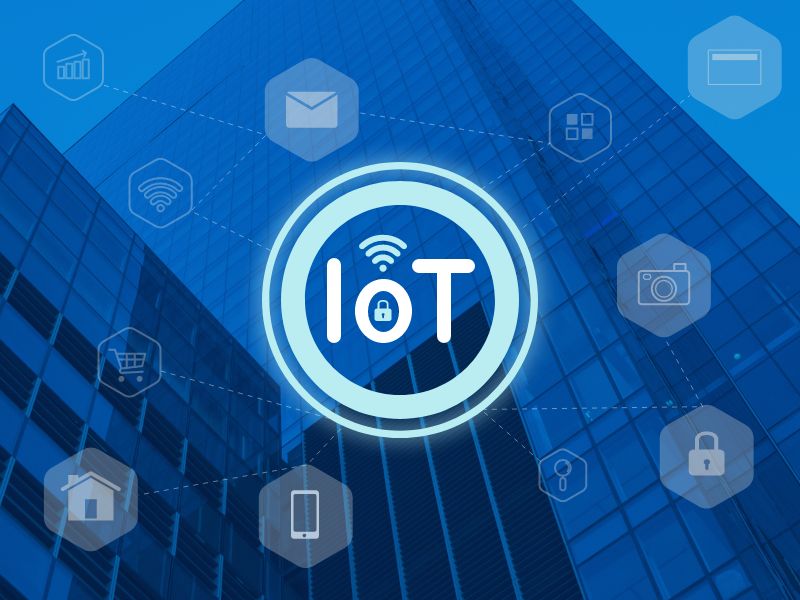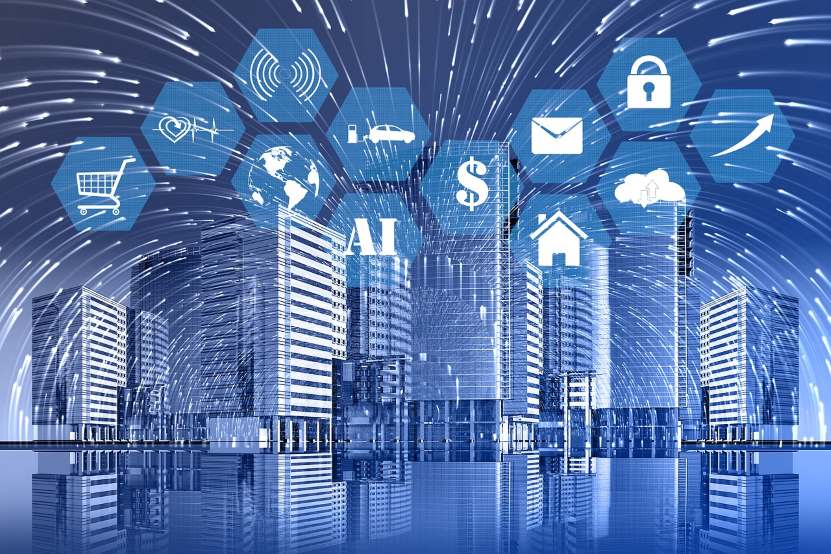Transforming the Way We Manage: IoT Devices in Facility Operations

You are the facility manager of an expansive office complex; your role is pivotal in ensuring the efficiency of the building’s various operations. Then, out of the blue, your phone rings. A wave of concern washes over the bustling office as the internal temperature suddenly escalates, inciting an uncomfortable work environment and the inevitable downtime that follows.
The culprit? A rogue air conditioning unit, its functionality compromised, and the reason for its defect shrouded in mystery. An unforeseen hurdle disrupts the office’s harmony and its occupants’ productivity.
What if you can proactively intercept such disruptions before they become real problems? This is where the riveting innovation of the IoT takes center stage.
You gain real-time insights and control by integrating IoT devices into critical components like AC units. Remotely diagnose the problem, adjust settings, and ensure a comfortable environment for the building occupants.
In this blog, we’ll explore the various IoT devices used in facility management. From smart boilers to connected HVAC units, we’ll unravel the potential of IoT in revolutionizing the way you approach your role as a field service provider.
Key Areas of Facilities Management Where IoT is Used:
As service providers, you’re experiencing a digital transformation that is reshaping the way you manage and maintain facilities. Let’s take a moment to reflect on the key elements in IoT that are driving this change and the areas where the use of IoT devices in facility management is revolutionizing operations:
Maintenance and Repairs:
The upkeep and maintenance of buildings, equipment, and infrastructure are vital to ensure their longevity and safe operation. Regular inspections, proactive repairs, and planned maintenance schedules help minimize disruptions, prevent costly breakdowns, and create a conducive work environment.
Energy Management:
With the increasing focus on sustainability and cost efficiency, effective energy management is crucial. By monitoring energy consumption, implementing energy-saving measures, and exploring renewable energy sources, facilities managers can reduce operational costs and mitigate the environmental impact.
Security and Access Control:
Safeguarding the facility and its occupants is a top priority. Implementing robust security measures, such as surveillance systems, access control protocols, and emergency response plans, helps prevent unauthorized access, mitigate risks, and ensure the safety of personnel and assets.
Environmental Monitoring:
Maintaining a healthy and sustainable environment within the facility is essential for occupant well-being. Facilities managers monitor and control factors like air quality, temperature, humidity, and noise levels to create a comfortable and productive atmosphere.
Space Utilization:
Optimizing the use of available space is critical to maximize productivity and cost efficiency. Through space planning, layout optimization, and utilization analysis, facilities managers can optimize space effectively, supporting the organization’s goals and accommodating the needs of employees and stakeholders.
Learn How You Could Use
IoT in Your Facility Operations
- Increase Profitability
- Reduce Costs
1. Enhancing Energy Management with IoT Devices
As a startup founder or service provider in the field, you understand the importance of efficient energy management in your facilities.
With rising energy costs and increasing environmental concerns, optimizing energy usage has become a top priority. Thankfully, advancements in technology have paved the way for smarter and more sustainable energy management solutions.
Below are the devices to understand how IoT benefits in facility when it comes to energy management, helping you reduce costs, enhance sustainability, and improve overall efficiency.
Smart Meters for Real-time Energy Monitoring
Imagine having the ability to monitor your energy consumption in real-time, just like checking the fuel gauge in your car. With IoT-enabled smart meters, this becomes a reality.
These smart meters provide detailed insights into your energy usage patterns, allowing you to identify areas of high consumption and take proactive measures to reduce waste. By understanding how and when energy is being used, you can make informed decisions to optimize your operations.
Let’s say you notice a spike in energy usage during non-working hours. This could indicate faulty equipment or unnecessary energy consumption, prompting you to investigate and address the issue promptly.
Energy Usage Analytics and Optimization
Analyzing energy usage data is crucial for effective energy management. IoT connected devices can collect and analyze vast amounts of data, providing valuable insights into your energy consumption patterns.
By utilizing advanced analytics tools, you can identify energy-saving opportunities and implement optimization strategies.
A good facilities management software, for instance, can help you analyze historical data to discover that certain equipment or processes are consuming more energy than necessary. Armed with this information, you can make data-driven decisions to optimize equipment settings, schedule maintenance, or even consider upgrading to more energy-efficient alternatives.
Demand Response Systems
Demand response systems enable you to actively manage your energy consumption during peak demand periods. IoT devices for facility management play a vital role in these systems by facilitating real-time communication between your facility and the power grid.
For instance, when the grid experiences high demand, you can receive signals through IoT devices to temporarily reduce non-essential energy usage or switch to alternative energy sources.
By participating in demand response programs, you not only contribute to grid stability but also benefit from potential cost savings or incentives offered by energy providers.
Automated Lighting and HVAC Controls
Lighting and HVAC systems are significant contributors to energy consumption in facilities. IoT devices can automate and optimize these systems, ensuring energy efficiency without compromising comfort. One of the benefits of IoT devices is their ability to automate and optimize lighting and HVAC systems, resulting in energy savings and improved comfort.
For instance, occupancy sensors can detect human presence in a room and automatically adjust lighting and temperature settings accordingly. This eliminates the need for manual control and reduces energy wastage in unoccupied areas. Additionally, IoT-enabled controls can integrate with weather forecasts and occupancy schedules, further optimizing energy usage.
By implementing these automated controls, you can achieve substantial energy savings while maintaining a comfortable environment for employees and visitors through an energy-efficient HVAC system.
Renewable Energy Integration
Embracing renewable energy sources is a key step towards sustainable energy management. IoT devices facilitate the seamless integration of renewable energy systems into your facilities.
For instance, solar panels equipped with IoT sensors can monitor the amount of energy generated and consumed, allowing you to track your renewable energy contribution. These building management sensors provide valuable insights into the performance and efficiency of your renewable energy systems.
By intelligently managing the interplay between renewable energy sources and the power grid, IoT devices help maximize your utilization of clean energy and minimize reliance on non-renewable resources.
2. Safeguarding Your Facility with IoT Devices
As a startup founder or service provider in the field, you understand the importance of ensuring the security and safety of your facility. Today, traditional security measures are no longer sufficient to address the ever-growing risks. That’s where IoT devices come into play, revolutionizing security and access control in facilities management.
IoT-enabled surveillance cameras:
You can have the ability to monitor your facility from anywhere at any time. IoT-enabled surveillance cameras provide just that.
These advanced cameras can be connected to your network, allowing you to remotely access live feeds and recorded footage through your smartphone or computer.
This enhanced surveillance not only deters potential intruders but also provides valuable insights into facility operations. For example, you can monitor employee movement, identify areas of congestion, and improve overall safety protocols.
Access control systems using IoT devices:
The benefits of IoT devices in facility management extend beyond surveillance to access control systems as well. Gone are the days of traditional key locks and physical access cards. IoT devices have transformed access control systems, making them more efficient and secure.
This eliminates the need for physical keys or cards, reducing the risk of lost or stolen credentials. Additionally, these systems provide real-time data on who enters and exits the premises, allowing for better tracking and auditing capabilities.
Intrusion detection and alarm systems:
Preventing unauthorized access is crucial for maintaining a secure facility. IoT devices offer intelligent intrusion detection and alarm systems that can detect and alert you of any suspicious activities or breaches.
These systems use a combination of sensors, cameras, and machine learning algorithms to analyze patterns and identify potential threats. For instance, if someone tries to tamper with a door or window, the system will immediately send a notification to your smartphone, enabling you to take appropriate action.
Visitor management solutions:
Managing visitors efficiently while maintaining a high level of security can be a challenging task. IoT-based visitor management solutions like FieldCircle can simplify this process. By using IoT devices such as tablets or kiosks, you can streamline visitor check-ins, capture important details like identification documents, and print visitor badges on the spot.
These solutions enhance the overall visitor experience while ensuring that only authorized individuals gain access to restricted areas. For instance, a delivery person arriving at your facility can check-in using a self-service kiosk, providing their identification and purpose of visit, and receive a temporary badge for a designated area.
Emergency response and evacuation systems:
In times of crisis, quick and effective emergency response and evacuation procedures are paramount. IoT devices play a crucial role in enhancing these systems.
For instance, interconnected smoke detectors, fire alarms, and emergency lighting can be integrated into a centralized IoT platform. In the event of a fire or emergency, these devices can communicate with each other, triggering automated responses such as activating evacuation alarms, notifying emergency services, and guiding occupants to safe zones.
This level of automation and coordination ensures a faster response time, reducing the risk of injuries and property damage.
3. Enhancing Facility Management with Environmental Monitoring Solutions
One aspect that often goes unnoticed but significantly impacts facility management is environmental monitoring. By leveraging advanced IoT devices, you can gain valuable insights into various environmental factors and take proactive measures to address potential issues. Let’s explore some key environmental monitoring solutions that can revolutionize your facility management practices.
Air Quality Monitoring Sensors
Indoor air quality plays a crucial role in maintaining a healthy and productive environment. IoT-enabled air quality monitoring sensors continuously monitor parameters such as particulate matter, volatile organic compounds (VOCs), and carbon dioxide levels.
Water Quality and Leak Detection Systems
Water leaks and poor water quality can lead to significant damage and disrupt facility operations. IoT-based water quality and leak detection systems provide continuous monitoring and early detection of leaks, abnormal water pressure, or water contamination.
Temperature and Humidity Control Devices
Maintaining optimal temperature and humidity levels is essential for various facilities, such as data centers, warehouses, and healthcare settings. IoT-powered temperature and humidity control devices enable you to monitor and control these parameters remotely.
Noise and Vibration Monitoring Solutions
Excessive noise and vibrations can impact the well-being of occupants and indicate equipment malfunction or structural issues. IoT-based noise and vibration monitoring solutions continuously assess noise levels and vibrations in real-time.
Conclusion
Understanding the benefits of IoT devices in facility management can make a significant difference in your approach to managing facilities. By embracing IoT devices like air quality sensors, water detection systems, temperature controls, and noise monitoring solutions, you can proactively address potential issues and create a safe, efficient, and comfortable environment.
It’s crucial to stay informed about these advancements and adopt the right technologies that align with your facility’s needs. Get in touch to explore the power of IoT devices and how they can elevate your facility management practices.
By doing so, you’ll be well-equipped to provide exceptional service and ensure the well-being of occupants while maximizing operational efficiency. Embrace the power of IoT devices and take your facility management practices to new heights.
From Reactive and Preventive to
Predictive and More Efficient
- Increase Profitability
- Reduce Costs


